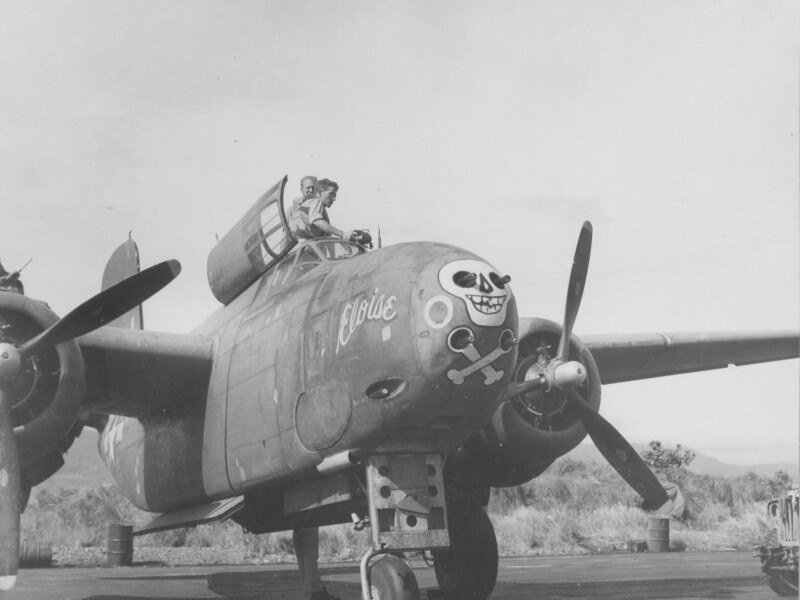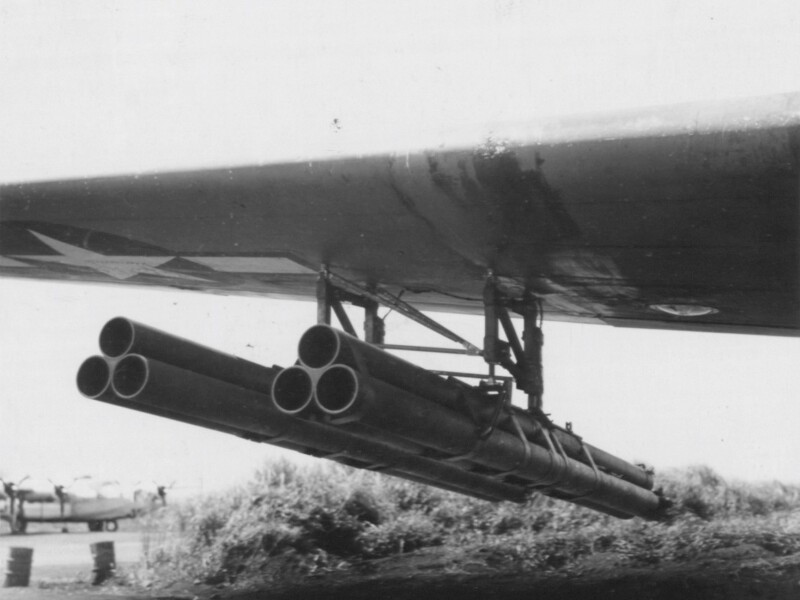-
Library
- Photos
- Documents
-
Geography
- Airfields
- Areas
-
Aviation
- Aircraft
- Engines
-
Weapons
- Guns
- Rockets
- Torpedoes
-
Avionics
- Radio
- Radar
- IFF
- Radar Detectors
- Jammers
- Navigation Devices
-
Unit Database
- Allied Units
- Axis Units
-
Pilot Database
- Pilots
- Victory Claims
- Torpedo Attacks
Photos

Armorers put tape on the ends of the barrels of .50 cal side guns on a Douglas A-20; this is done to prevent dust from collecting in the barrels after they have been cleaned. The tape is removed just before the plane takes off on a mission.

A Douglas A-20 of the 5th Air Force's 3rd Bombardment Group, 90th Bombardment Squadron flies mast-high over Japanese ships at Manokwari, Dutch New Guinea during an attack on June 9, 1944.

Smoke Begins To Pour From This Japanese Ship As Manokwari, Dutch New Guinea After Planes Of The 5Th Air Force 3Rd Bombardment Group, 90Th Bombardment Squadron Flew In At Minimum Altitude To Deliver Their Parachute Bombs During A Mission On June 9, 1944.

In some 180 missions against the Japanese, the light bomb squadron to which these Airmen belong has relentlessly attacked shipping, ground forces, supplies and enemy aircraft with bomb and machine gun. Flying Douglas A-20s the squadron destroyed 17 grounded Ja

A Douglas A-20 comes in for landing at an airstrip at Dobodura, New Guinea. 8 January 1944.

This dramatic aerial photograph, made from a US Army Air Forces plane flying a mere hundred feet above ground at Lae, New Guinea, shows a A-20 skimming a road in a strafing attack on Jap planes. It has just passed over a disabled enemy bomber. Under the tree,

A U.S. Army Air Forces A-20 attack plane pilot swooped down to within 60 feet of the ground to get this aerial view of smashed enemy planes at Lae, New Guinea. More than 50 Japanese planes, destroyed by allied bombing and strafing raids, littered the airfield.

A Fifth Air Force Douglas A-20 looks over Corregidor, the target, blasted incessantly by Far East Air Force heavies, attack bombers, and fighter bombers, preparatory to a hazardous paratroop landing on February 16th, 1945.








